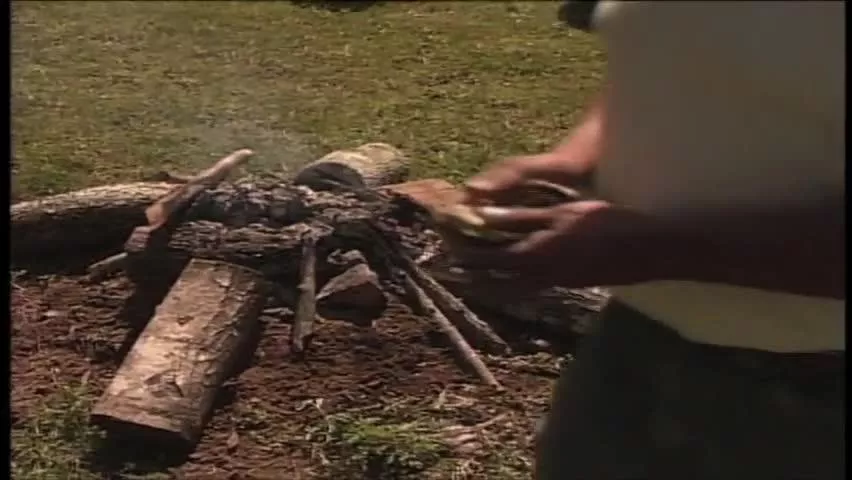
Photo
Tradition: Gadugi (ga-doo-gee) The word gadugi means "working together." Originally, the gadugi were a group of people in a Cherokee community who helped others in a time of need. The gadugi planted...
The Snowbird Cherokees looks at life in the Eastern Band of the Cherokee Indians, particularly in the relatively isolated traditional community of Snowbird, deep in the mountains of western North Carolina. When Cherokees were evicted from their native lands by the United States government in 1838, many of the ancestors of Snowbird managed to flee in advance of the soldiers, returning to their homes after months of hiding in the forests of the Smokey Mountains.
In addition to exploring the daily lives and culture of the Eastern Cherokees, this program delves into the history of the Cherokees, especially since the arrival of European whites in their territory. Descriptions of traditional Cherokee beliefs offer some insight into their worldview and how Cherokees today see their world and their future. Intercutting historical elements with contemporary life in the Eastern Band, this is one of the few programs that focuses on Eastern, rather than Western, Cherokees.

Photo
Tradition: Gadugi (ga-doo-gee) The word gadugi means "working together." Originally, the gadugi were a group of people in a Cherokee community who helped others in a time of need. The gadugi planted...
Photo
In Snowbird, some children learn the Cherokee language before they learn English. There are festivals to celebrate Cherokee ancestors and elders and the changing of seasons. Traditional arts, dance...
Photo
Over 500 Cherokee now live on tribal lands that make up the Snowbird Community. Tribal lands, or reservations, are protected for use by Native Americans. The Snowbird Cherokee have kept much of their...
Photo
The Snowbird Cherokee community looks like a typical American community in many ways. There are schools, churches, cars and roads. The Snowbird Cherokee play on local football teams and Snowbird youth...
Photo
Only a few Cherokee escaped the Indian Removal Act. Those who remained found safe hiding places in the remote mountains and valleys of Appalachia. Today, the Snowbird community is home to many...
Photo
Between 1838 and 1839, over 15,000 Cherokee people were forced to march over 800 miles. The Cherokee's dangerous route began in the Appalachian mountains and ended in Oklahoma. Over 4,000 Cherokee...
Photo
So what became of the once grand Cherokee nation? In 1830, the United States Congress passed the Indian Removal Act. The government of the United States wanted to move Native Americans from land in...
Photo
Oconostota: The original site of Echota was flooded while building a lake, but prior to its loss, archaeologist John Green discovered the grave site of the legendary war chief, Oconostota. Photo...
Photo
The Cherokee had a system of government, trade and a religious order. The Cherokee also had a capital city. In the 1700s, the capital of the Cherokee tribe was Echota, which means "a peaceful place."...
Photo
The group of Native Americans known as the Cherokee have lived in the southeastern United States for thousands of years. Their population at one time numbered over 20,000 people. Before the 1800s...